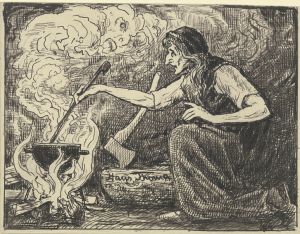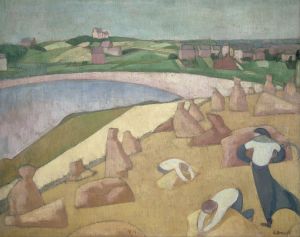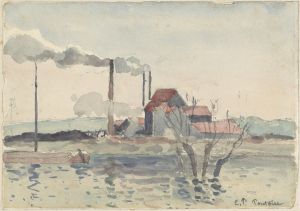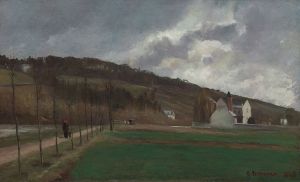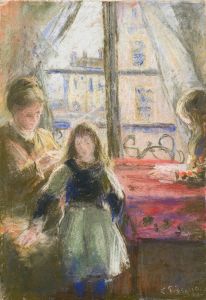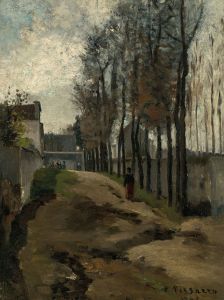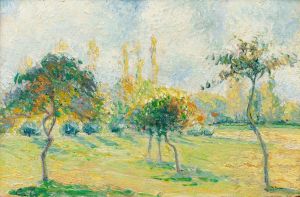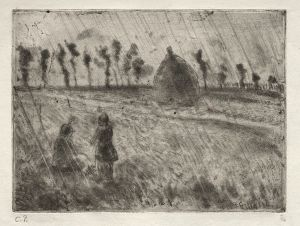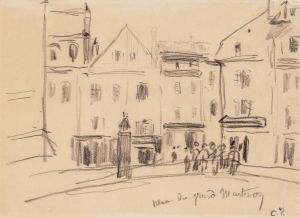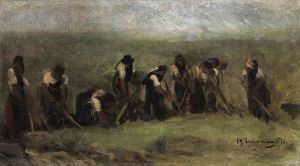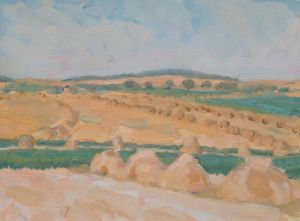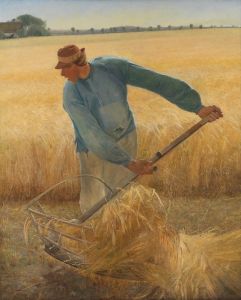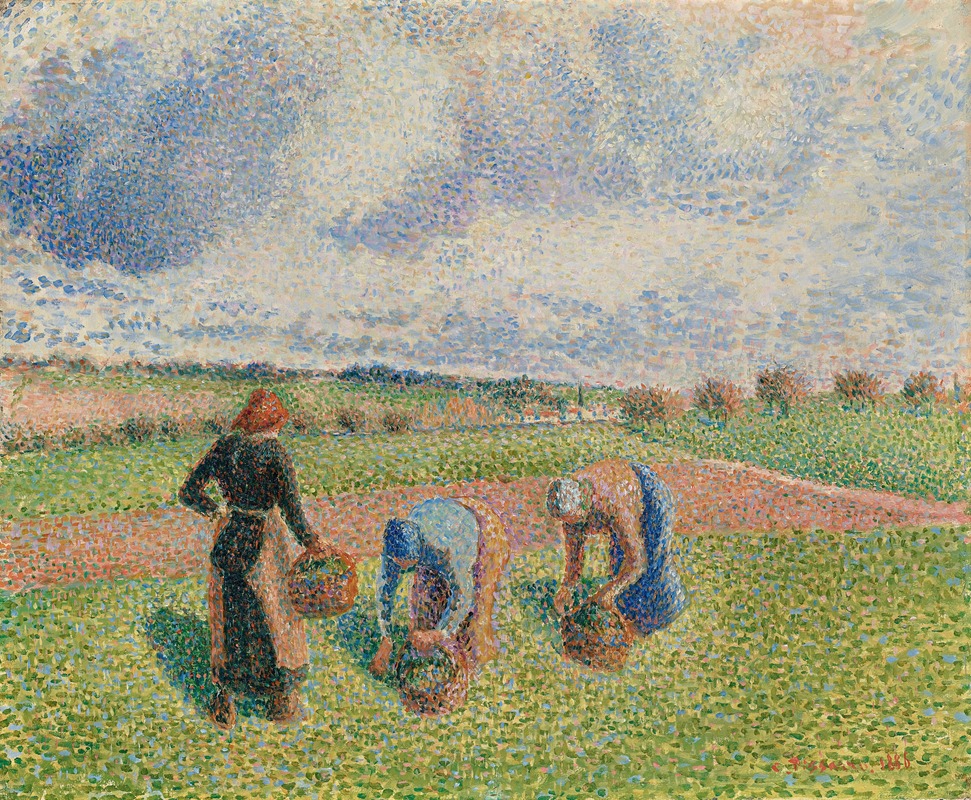
Paysannes Ramassant Des Herbes, Éragny
A hand-painted replica of Camille Pissarro’s masterpiece Paysannes Ramassant Des Herbes, Éragny, meticulously crafted by professional artists to capture the true essence of the original. Each piece is created with museum-quality canvas and rare mineral pigments, carefully painted by experienced artists with delicate brushstrokes and rich, layered colors to perfectly recreate the texture of the original artwork. Unlike machine-printed reproductions, this hand-painted version brings the painting to life, infused with the artist’s emotions and skill in every stroke. Whether for personal collection or home decoration, it instantly elevates the artistic atmosphere of any space.
"Paysannes Ramassant Des Herbes, Éragny" is a painting by the renowned French artist Camille Pissarro, created in 1886. Pissarro is often celebrated as one of the founding figures of Impressionism, and his work played a significant role in the development of both Impressionist and Post-Impressionist movements. This particular painting is a testament to his enduring interest in rural life and the natural landscape.
The painting depicts peasant women gathering herbs in the village of Éragny, a small commune in northern France where Pissarro lived for several years. Éragny was a source of inspiration for Pissarro, providing him with a wealth of pastoral scenes that he captured in numerous works. The village's serene environment and the simplicity of rural life resonated deeply with Pissarro's artistic vision.
In "Paysannes Ramassant Des Herbes, Éragny," Pissarro employs his characteristic brushwork and a palette that reflects the natural hues of the countryside. The composition is marked by its harmonious balance and the gentle interplay of light and shadow, which are hallmarks of Pissarro's style. The figures of the women are integrated into the landscape, emphasizing the connection between humans and nature, a recurring theme in Pissarro's oeuvre.
Pissarro's technique in this painting reflects his transition from the pure Impressionist style to a more structured approach that incorporates elements of Neo-Impressionism. During this period, he experimented with pointillism, a technique developed by Georges Seurat and Paul Signac, which involved applying small dots of color to create a more luminous effect. While "Paysannes Ramassant Des Herbes, Éragny" does not fully embrace pointillism, it demonstrates Pissarro's interest in exploring new methods to depict light and atmosphere.
The painting is also notable for its social commentary. Pissarro, who held anarchist views, often depicted the working class in his art, highlighting their dignity and the value of their labor. By choosing to portray peasant women engaged in their daily tasks, Pissarro draws attention to the often-overlooked contributions of rural workers to society. This focus on the everyday lives of ordinary people is a defining feature of Pissarro's work and underscores his commitment to realism and social justice.
"Paysannes Ramassant Des Herbes, Éragny" is housed in a private collection, and as such, it is not as widely accessible as some of Pissarro's other works. Nevertheless, it remains an important piece within his body of work, illustrating his continued exploration of rural themes and his evolving artistic techniques.
Camille Pissarro's legacy as a pioneering artist is firmly established, and his influence can be seen in the works of many subsequent artists. His dedication to capturing the beauty of the natural world and the lives of ordinary people continues to resonate with audiences today, making paintings like "Paysannes Ramassant Des Herbes, Éragny" enduringly relevant.





